Historic winter of 2014-2015---Damage report
rockman50
9 years ago
last modified: 9 years ago
Featured Answer
Sort by:Oldest
Comments (48)
tibbrix
9 years agoRelated Discussions
Apples 2014
Comments (57)The FB that I had 2 years ago effected all three of these varieties and I had to do some severe pruining on all 3, but no fb this year. I also moved DRD, so it spent this year acclimating itself to it's new location. I expect the first fruit from it next year. This year was the first year that Cauley and Summer Banana produced fruit. I'm a firm believer that you can't tell a whole lot from the first years' fruit. I don't let my apples carry fruit, until they are at least 5 years old. I learned that from David Vernon, who sold me the trees. All of that aside, both varieties produced a fair amount of fruit. Cauley is very hard, which I like, has a slightly yellow meat and a pleasant spritely taste, which I think will get better over time. It's prococious and I had to support many of the branches. I understand that it can produce fruit that can weigh up to a pound. Summer Banana is a totally diferent apple. It's mainly a tip bearer. The skin is yellow with white flesh that is somewhat bland to my taste. I didn't smell or taste any hint of banana, so i think the name is somewhat deceiving. I wonder, if Winter banana is the same. As I said before, I don't place a whole of value on first year fruits. I chose this tree because of the name and the fact it came from Marion County, here is SC, plus both of these apples have a historical significance. it's interesting to know what people ate here 200+ years ago. If you'll allow me to reminisce, I bought Bevan's Favorite because my grandfather used to have this tree in his backyard. I can remember climbing the tree, when I was a little boy, fighting my cousin for the apples. THEY SURE WERE GOOD....See MoreDouglas Firs up to 465 Feet tall.
Comments (59)Fellow tall tree lovers: Let me quote this entry from way back in 2009 radagast(US east coast) "For more information regarding accurate tree measuring, please visit the website of the Eastern Native Tree Society (ENTS) We have lots of information regarding east coast species as well as some on west coast species. There are also plenty of article about accurate tree height measurement methods, historical tree height claims, etc." The work of the Native Tree Society on tree measurement is outstanding, if not "revolutionary." The common measuring technique "of the past" ( I hope it is really "of the past") is what can be called the "tangent method." This involves measuring the distance to the base of the tree from the "observer," and then taking a clinometer reading from the same point to measure the angle to the top. If the ground is not level, a similar measurement of the angle to the bottom must be made, and another tangent calculation. Then addition, or subtraction. The NTS has checked some of the height measurements of the trees listed by the American Forests in the past as national champion trees, and has found errors of as much as 30% or more in those measured by the tangent method. The reason for the errors is not simply errors in the use of the "equipment," but in the fundamental assumption behind the calculations. This tangent calculation assumes that there is a right angle created by the "facts" of the observation, but this is often not the case--in fact, it is virtually never the case exactly. There are two reasons for this. First, IF the actual top of the tree is sighted, it is most likely not directly above the base, as must be assumed if any tangent calculation is used. If it is close to being directly above the base, the measurement will be fairly accurate. Second, and this may result in more serious errors sometimes, what is sighted as the top, may not actually be the top, but some foliage/branch that is closer to the observer than the actual top. This error also in all probability "messes up" any assumed right triangle required for any tangent calculation. The most basic method supported by NTS can be called "sine top, sine bottom." This involves the use of a laser range finder and a clinometer. I start by reading the distance to the top, and then reading the angle to the top, and then doing a sine calculation. Then I repeat, reading the distance to the base, then the angle to the base, and then another sine calculation, adding or subtracting the results as needed. This method can fail to give the correct height of a tree ONLY if the actual highest point of the tree is not sighted. As for the right triangle needed for the calculation, it is always present as a mathematical certainty--it is embedded in the basic assumption that the sine calculation is based on. In other words, if the distance and the angle are read along the same line from the same point, the right triangle is assumed in the sine calculation. No error in this regard is possible. If what is sighted is not actually the top, but a part of the foliage that is closer than it would be if it were directly above the base, the error will give a result somewhat less than the actual height of the tree, not significantly more as is usually the case with the tangent method. The sine method will give an accurate reading, always, of the height of what is sighted above the level the observer is standing on. The NTS Website contains the most detailed description of this most basic sine top, sine bottom method, along with other methods of measuring tree heights, explaining the pros and cons of each. The Wikipedia article on tree measurement is a very good brief summary, giving the "essentials." --spruce...See MoreClimate Change Impacts Coming
Comments (19)It's actually pretty simple. The long-term average temperature changes that have been tracked correlate well with the CO2 changes. On top of that, models of how the Earth's atmosphere responds to CO2 burden are straightforward, and predict the temperature change that is seen. So it's pretty clear that CO2 plays a major role. If you argue with that, then you argue with atmospheric equilibrium models that have been proven over decades. It's a lot of computation, but the physical principles are actually pretty simple. Now, we can argue about what has caused the CO2 increase. Of course, that's not what this topic is about, and it makes little sense to change the topic. By the way, the references quoted above are from the astute-sounding "Nongovernmental International Panel on Climate Change" (NIPCC). Don't be fooled. This group used to call itself the "Heartland Institute", and decided to change it's name to make it sound more auspicious, like a legitimate alternate authority to the established "International Panel on Climate Change" (IPCC), which is a real scientific body involving hundreds of scientists and think tanks. I won't start any arguments, but please don't hesitate to look up the Heartland Institute if you have any inclination to take their stuff seriously. They are, by the way, well funded by Exxon-Mobil and the Koch brothers....See MoreBirds and other mobile features in the garden 2015 #1
Comments (81)WTG, Claire! Good bird mother. That's a happy thrush. Glad your power stayed on. What a relief. I can't answer nhbabs's curiosity about why we Southerners only see Hermit Thrushes in the winter, but after checking my 'Thrushes' folder, yup, all the pictures are in winter. They must summer in NH and winter in the flatlands, I guess. Today is the first time I was able to capture a RB Woodpecker twice in flight after leaving the suet cage. Downloaded a free copy of GIMP, (a free rendition of Photoshop) and tried to superimpose the two pictures. I need practice, but here it is: Jane This post was edited by corunum on Tue, Jan 27, 15 at 16:29...See Moretibbrix
9 years agoPersimmons
9 years agobill_ri_z6b
9 years agomoliep
9 years agoclaireplymouth z6b coastal MA
9 years agolast modified: 9 years agoprairiemoon2 z6b MA
9 years agolast modified: 9 years agoseanm10660 z6b
9 years agobill_ri_z6b
9 years agoprairiemoon2 z6b MA
9 years agolast modified: 9 years agobill_ri_z6b
9 years agoprairiemoon2 z6b MA
9 years agolast modified: 9 years agobill_ri_z6b
9 years agoprairiemoon2 z6b MA
9 years agodefrost49
9 years agodiggerdee zone 6 CT
9 years agoNHBabs z4b-5a NH
9 years agodiggerdee zone 6 CT
9 years agodefrost49
9 years agoprairiemoon2 z6b MA
9 years agolast modified: 9 years agodefrost49
9 years agonekobus
9 years agoprairiemoon2 z6b MA
9 years agolast modified: 9 years agonekobus
9 years agomamasalvo
9 years agobill_ri_z6b
9 years agoclaireplymouth z6b coastal MA
9 years agoprairiemoon2 z6b MA
9 years agolast modified: 9 years agohummers8
8 years agohummers8
8 years agoprairiemoon2 z6b MA
8 years agocarol6ma_7ari
8 years agohummers8
8 years agoprairiemoon2 z6b MA
8 years agodefrost49
8 years agoTerri zone 6
8 years agobill_ri_z6b
8 years agoclaireplymouth z6b coastal MA
8 years agoseanm10660
8 years agobill_ri_z6b
8 years agoseanm10660 z6b
8 years agobill_ri_z6b
8 years agoNHBabs z4b-5a NH
8 years agoprairiemoon2 z6b MA
8 years agolast modified: 8 years agoseanm10660 z6b
8 years agobill_ri_z6b
8 years agoprairiemoon2 z6b MA
8 years agolast modified: 8 years ago
Related Stories
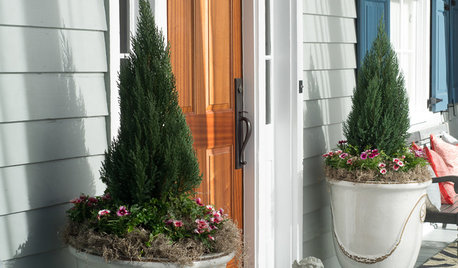
TRADITIONAL HOMESHouzz Tour: A Historic Charleston Charmer Is Reborn
A pre–Civil War home is brought back to life with a mix of traditional and modern decor
Full Story
KITCHEN DESIGNThe Most Popular Kitchen Storage Ideas of 2015
Maximizing every inch, keeping necessities close at hand and finding room for technology top Houzzer favorites
Full Story
GARDENING GUIDESSee Winning Gardens From the 2015 Chelsea Flower Show
The popular annual London event showcases the best in garden design. Get inspired by these 2015 gold-medal winners
Full Story
MOST POPULARHouzz Call: Show Us Your Winter View!
Share pictures of your home and garden in winter — whatever your climate, architecture and plantings
Full Story
BATHROOM DESIGN14 Bathroom Design Ideas Expected to Be Big in 2015
Award-winning designers reveal the bathroom features they believe will emerge or stay strong in the years ahead
Full Story
LIFEHard Winter? 9 Ways to Battle Cabin Fever
We know a lot of you are trapped where it just won’t stop snowing. Here are some ways to survive
Full Story
EVENTSModernism Week 2015 Opens in Palm Springs
The city’s 10th annual festival celebrates midcentury architecture and design. Here’s a look at what’s on view
Full Story
HOUZZ TOURSHouzz Tour: Lovingly Resurrecting a Historic Queen Anne
Dedication and a keen eye turn a neglected eyesore into the jewel of its Atlanta neighborhood
Full Story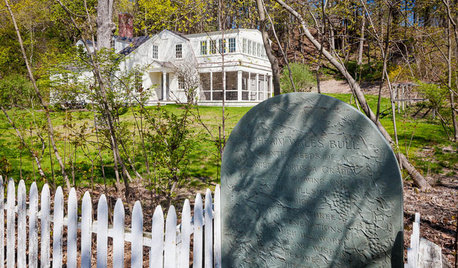
TRADITIONAL HOMESHouzz Tour: Historic Concord Grapevine Cottage’s Charms Restored
This famous property had fallen on hard times, but passionate homeowners lovingly brought it back
Full Story
COLORBest Ways to Use the Soft Yellow Color of 2014
You may fall for PPG Pittsburgh Paints’ Turning Oakleaf if you like your hues warm, mellow and cheery
Full Story



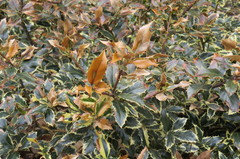

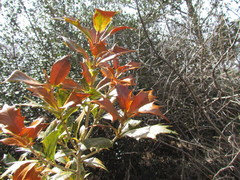



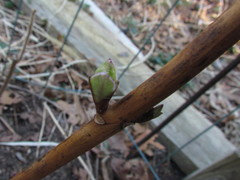
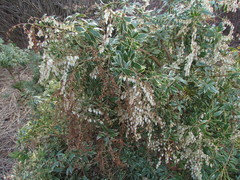



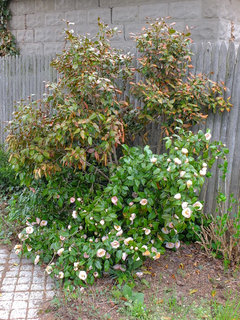

NHBabs z4b-5a NH